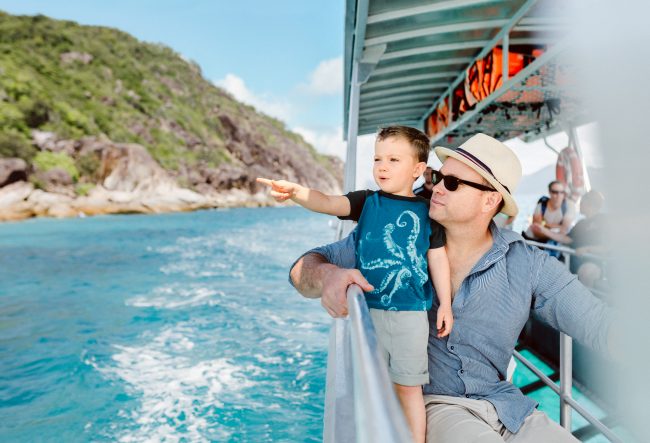 Take the ferry 45 minutes out to sea from Cairns, Australia, and you’ll find yourself on the tiny island of Fitzroy, a lush rainforest oasis surrounded by white coral beaches and brilliant blue waters that are part of the Great Barrier Reef. It was on this unspoiled tropical island that Tea and the King family join forces with National Geographic Explorer Jess Cramp. Jess flew in from her home base in the Cook Islands to explore the rainforest, snorkel the reef, and show us how to be scientists.
Take the ferry 45 minutes out to sea from Cairns, Australia, and you’ll find yourself on the tiny island of Fitzroy, a lush rainforest oasis surrounded by white coral beaches and brilliant blue waters that are part of the Great Barrier Reef. It was on this unspoiled tropical island that Tea and the King family join forces with National Geographic Explorer Jess Cramp. Jess flew in from her home base in the Cook Islands to explore the rainforest, snorkel the reef, and show us how to be scientists.
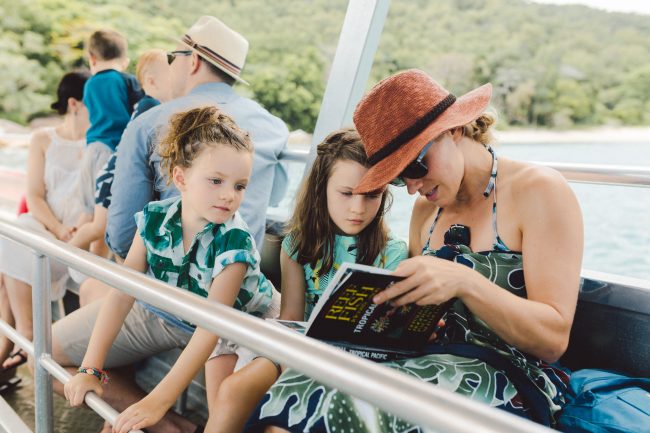 “This is a quadrat,” Jess explains as she deftly ties four sticks together to form a rough square. “We are going to use this on our hike to do science! It’s a scientific way of studying what kind of animals are in the habitat.”
“This is a quadrat,” Jess explains as she deftly ties four sticks together to form a rough square. “We are going to use this on our hike to do science! It’s a scientific way of studying what kind of animals are in the habitat.”
Eight-year-old Grace King peers over Jess’s shoulder at the quadrat and then asks tentatively, “Will there be snakes there?”
“I don’t know!” Jess says. “Let’s go find out.”
She pulls three small notebooks from her bag and hands one to Grace, another to Grace’s sister Annabel (6) and the third to four-year-old Alex (you can call him “Big Al.”)
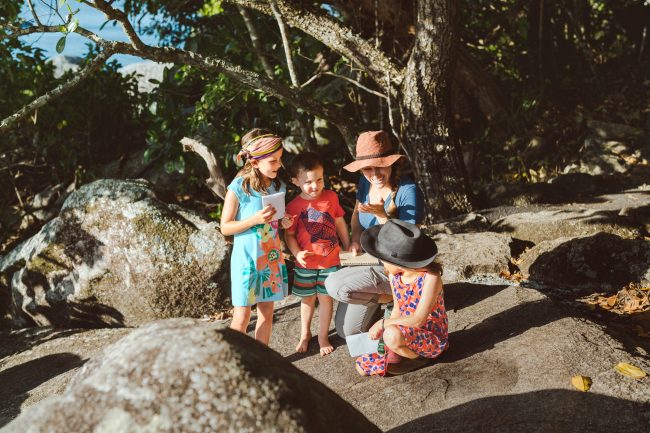 “We’re going to use these notebooks to practice being naturalists and record our scientific discoveries,” Jess says, “If we see an animal and we don’t know what it is, we’re going to write down everything we can observe about it and then we’ll look it up later so we can identify the species.
“We’re going to use these notebooks to practice being naturalists and record our scientific discoveries,” Jess says, “If we see an animal and we don’t know what it is, we’re going to write down everything we can observe about it and then we’ll look it up later so we can identify the species.
“I heard that there is an echidna who lives along this trail so come on, let’s go see if we can find him!”
Jess pops a sun hat over her long braid and heads off into the dappled rainforest, the three young explorers hot on her heels, notebooks in hand.
When we reach a secluded beach strewn with bleached white coral some time later, the two girls have filled their notebooks with drawings of lizards, spiders, flying foxes and a mysterious “bush turkey.”
“It had feet like a chicken and it was scratching in the leaves, but it’s not a chicken,” Annabel explains. “We’re going to look it up when we get back to the hotel.” She flips a page in her notebook and points to the many-clawed animal drawn there. “Look at this one!”
Next to the pencil sketch, her carefully printed notes read: “The crocidile lizid. Shaped as a crocidile but is a lizid and cool cool cool!”
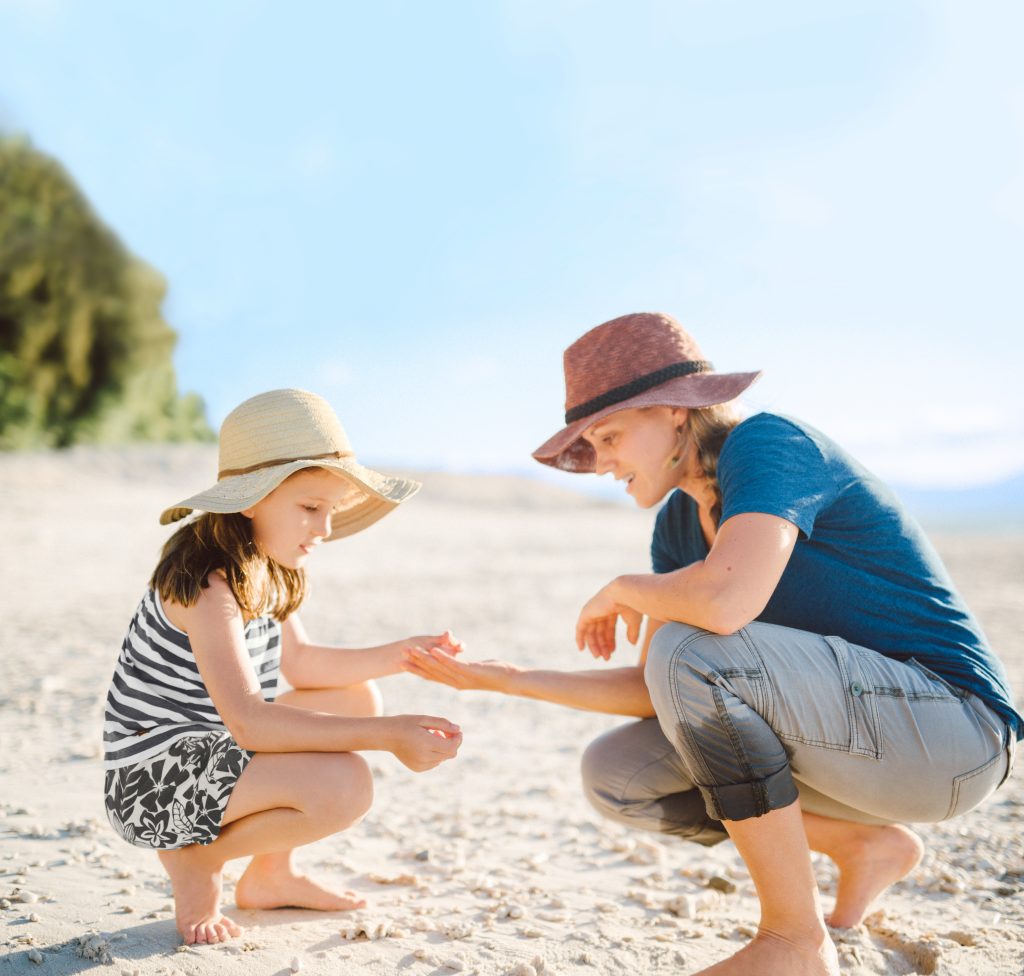 Further down the beach, Grace races up to Jess with a handful of shells and staghorn coral. “Jess! Jess! Can you help me identify these?”
Further down the beach, Grace races up to Jess with a handful of shells and staghorn coral. “Jess! Jess! Can you help me identify these?”
Jess picks a piece of coral from Grace’s hand and holds it up. “We talked about this one earlier,” she says, “Do you remember the name of the animals who live inside coral?”
“Zoo-zan-the-ly?” Grace offers.
“Yes, that’s exactly it! Zooxanthellae are microscopic plant-like organisms that live inside coral—and corals couldn’t build a reef without them,” Jess says. “Let’s see what else you’ve got there.”
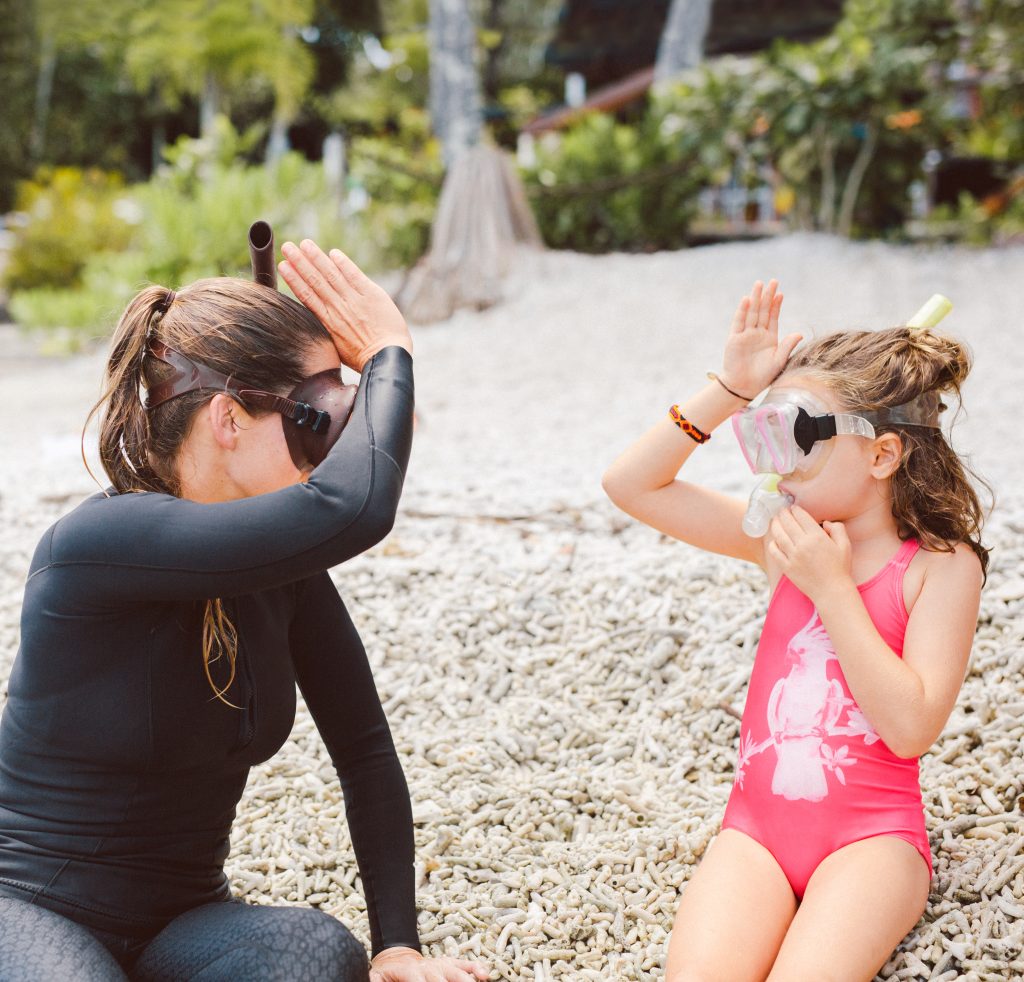 Grace holds up a small cylindrical shell for inspection and says, “Thanks for being a scientist with me!”
Grace holds up a small cylindrical shell for inspection and says, “Thanks for being a scientist with me!”
Jiggling one-year-old Willoughby on her hip a few paces away, Grace’s mum Elizabeth watches with a smile.
“She loves this,” Elizabeth says, nodding toward Grace. “She’s really into science. She’s going to be talking about this for days.”

